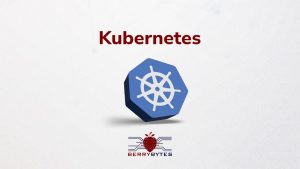
Kubernetes Architecture: Building the Foundations of Modern Computing
BerryBytes
- 0
- 522
In today’s fast-paced and dynamic technology landscape, companies are constantly seeking ways to streamline their infrastructure. Kubernetes, an open-source container orchestration system, has emerged as the go-to solution for managing containerized applications at scale. But what is Kubernetes, and how does it work?
At its core, Kubernetes is a system for automating the deployment, scaling, and management of containerized applications. It provides a platform for developers to package their applications in containers, which can then be deployed and managed in a consistent and scalable way across a distributed infrastructure.

Kubernetes achieves this by providing a flexible architecture that is designed to handle the complexities of modern computing environments. At a high level, Kubernetes architecture is composed of a set of nodes, each of which runs a set of containers and provides the resources necessary to run those containers. These nodes are managed by control plane, which is responsible for orchestrating the deployment and scaling of containers across cluster.
One of the key benefits of Kubernetes is its ability to abstract away the underlying infrastructure, allowing developers to focus on building and deploying their applications rather than worrying about the details of the infrastructure. This is achieved through the use of Kubernetes objects, which are high-level abstractions that represent various aspects of the deployment, such as pods (groups of containers), services (provide networking capabilities), and deployments (manage the scaling and rolling updates of pods).
In addition to these core objects, Kubernetes also provides a rich set of extensions and plugins that can be used to customize and extend the platform. For example, Kubernetes network model can be extended with plugins to support different networking technologies, such as SDN.
Another key feature of Kubernetes is its ability to handle failures gracefully. In a distributed environment, failures are inevitable, and Kubernetes is designed to handle them in way that minimizes disruption to application. For example, if a node fails, Kubernetes will automatically reschedule the affected containers onto other nodes, ensuring that the application remains available.
Finally, Kubernetes also provides a powerful API that can be used to automate the deployment and management of applications. This API can be used to integrate Kubernetes with other tools and systems, enabling developers to build custom workflows and automation pipelines that fit their specific needs.
In conclusion, Kubernetes is an essential tool for building modern, scalable, and reliable applications. Its flexible architecture, rich set of features, and powerful API make it an ideal platform for managing containerized applications at scale. With Kubernetes, developers can focus on building great applications, knowing that they have a solid foundation on which to build.
